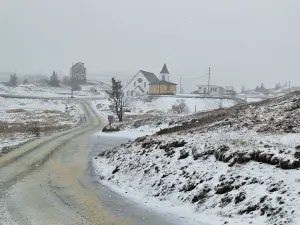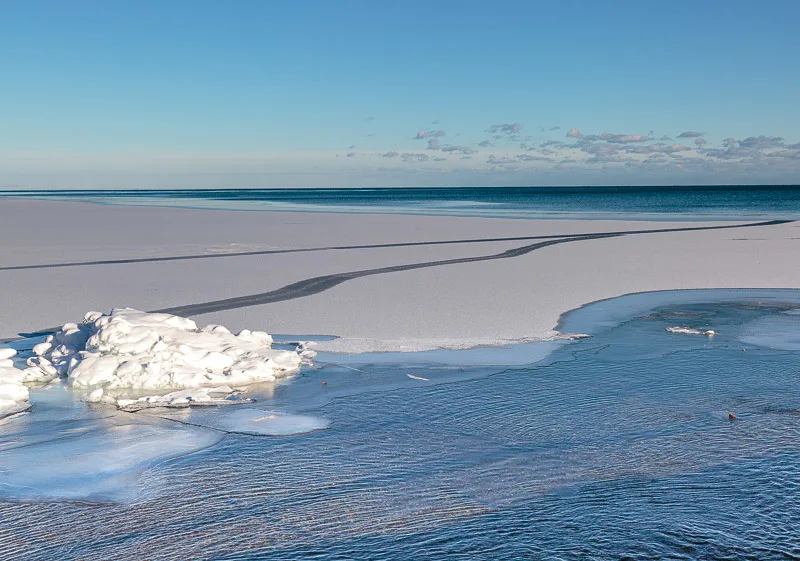
Arctic sea ice growing this winter, but there's more to the story
What's driving the relatively rapid sea ice growth this year?
What a difference a few months make.
At the end of October 2019, Arctic sea ice propelled towards an all-time minimum sea ice extent. Since then, the area of sea ice in the the Arctic has doubled in about 90 days, but that's far from a reliable indicator of bucking the long-term downward trend.
What's driving the relatively rapid sea ice growth this year? In short, blame the weather.
Weather and climate are often misconstrued. Weather is the short-term variation of weather patterns, not much longer than several weeks. The past month has featured weather patterns dominated by a pronounced, deep layer of cold air at higher latitudes; consequently, it's been highly efficient at building new sea ice, and you might have just heard of the cause.
THE POLAR VORTEX
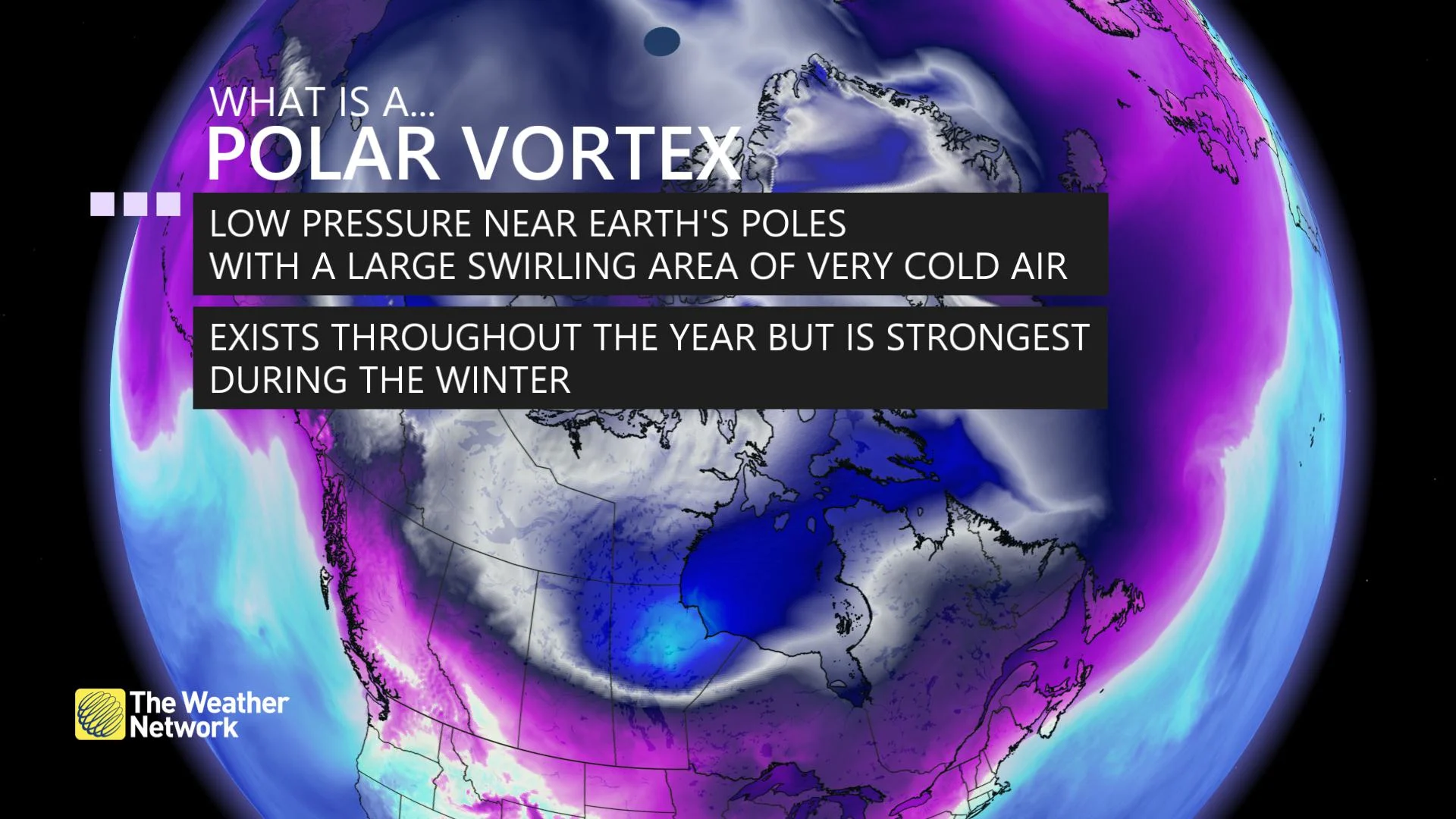
With the polar vortex remaining locked up across the northern latitudes, Canada has gotten off relatively easy with regards to severe winter cold this season. Yay?
SEA ICE EXTENT
How does the area of Arctic sea ice stack up compared to other decadal periods?
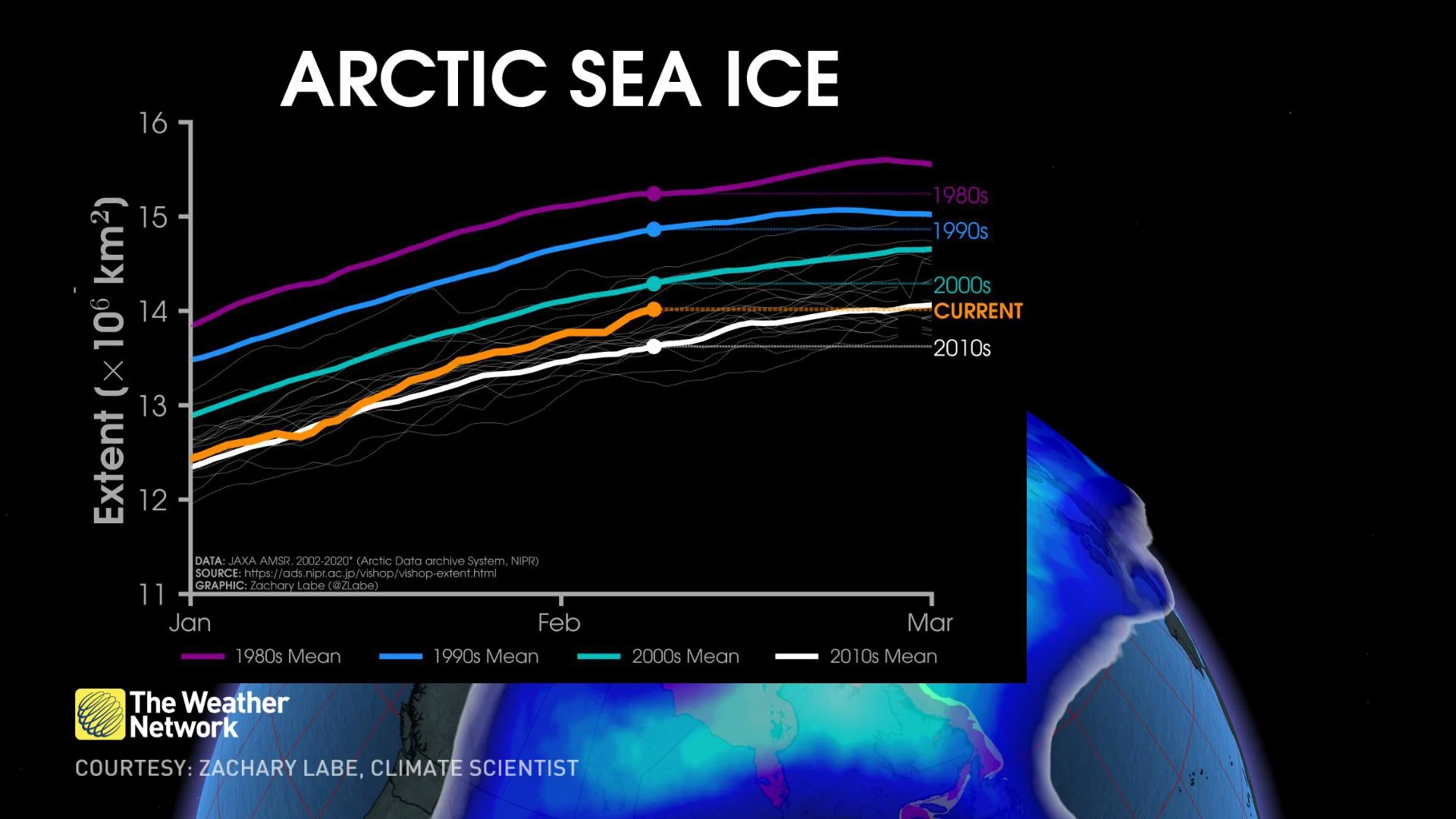
At over 14 million square kilometres, we're looking at one of the healthiest sea ice extents throughout the past decade for February. It's closer to the mean of the 2000s than the 2010s.
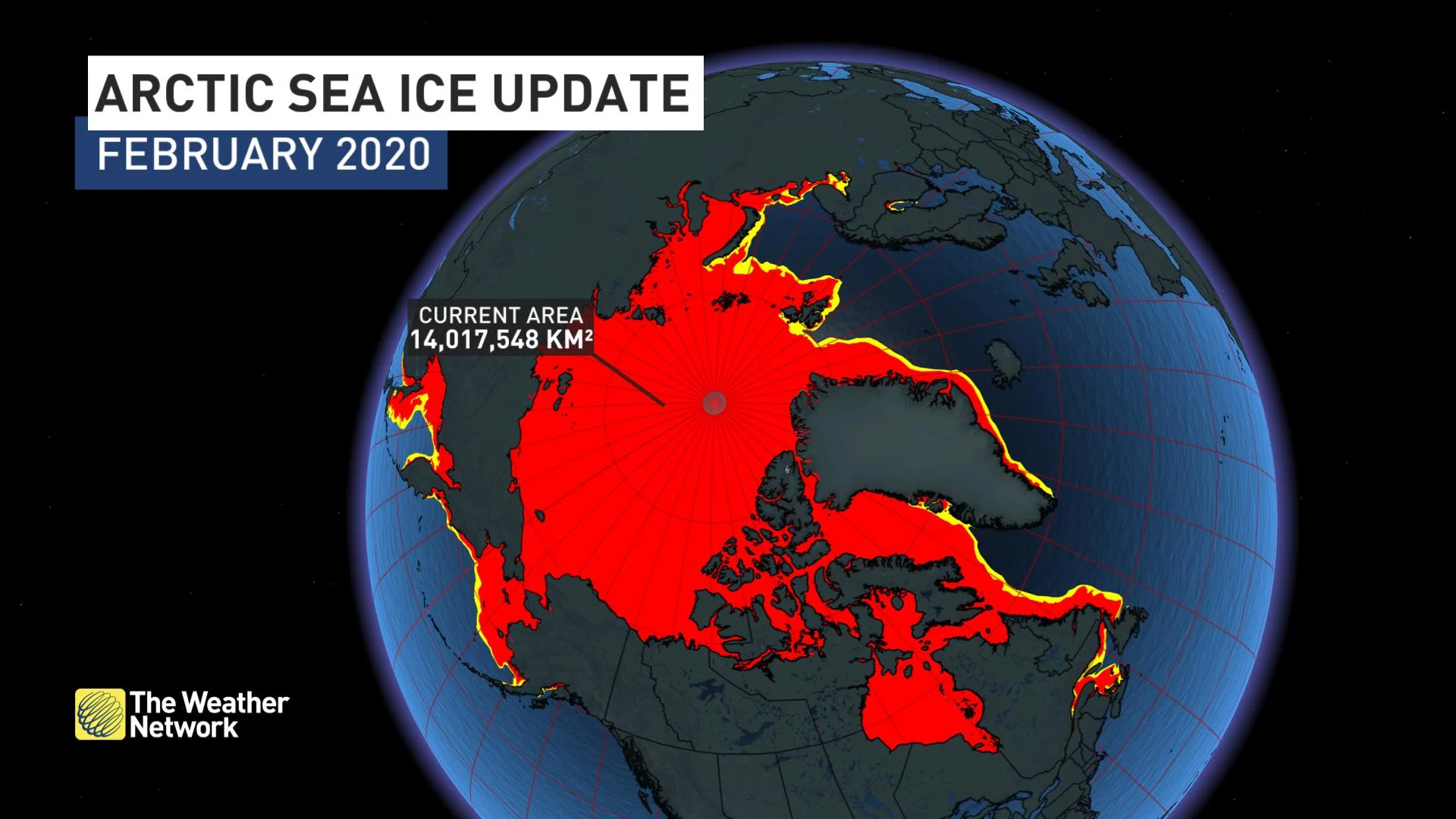
It's a bit of a facade and doesn't tell the whole story, akin to analyzing the part of the iceberg above water, exclusively.
There's more to sea ice than just the superficial, high-albedo (high amounts of light reflected) top layer.
While sea ice extent is important to track, another metric below the surface is paramount to infer significant climate trends.
The current thickness readings fit right into the long term average of the decade –- and no rebound in thickness has been observed. The older, thicker sea ice is much more resilient to transient weather patterns and ocean currents.
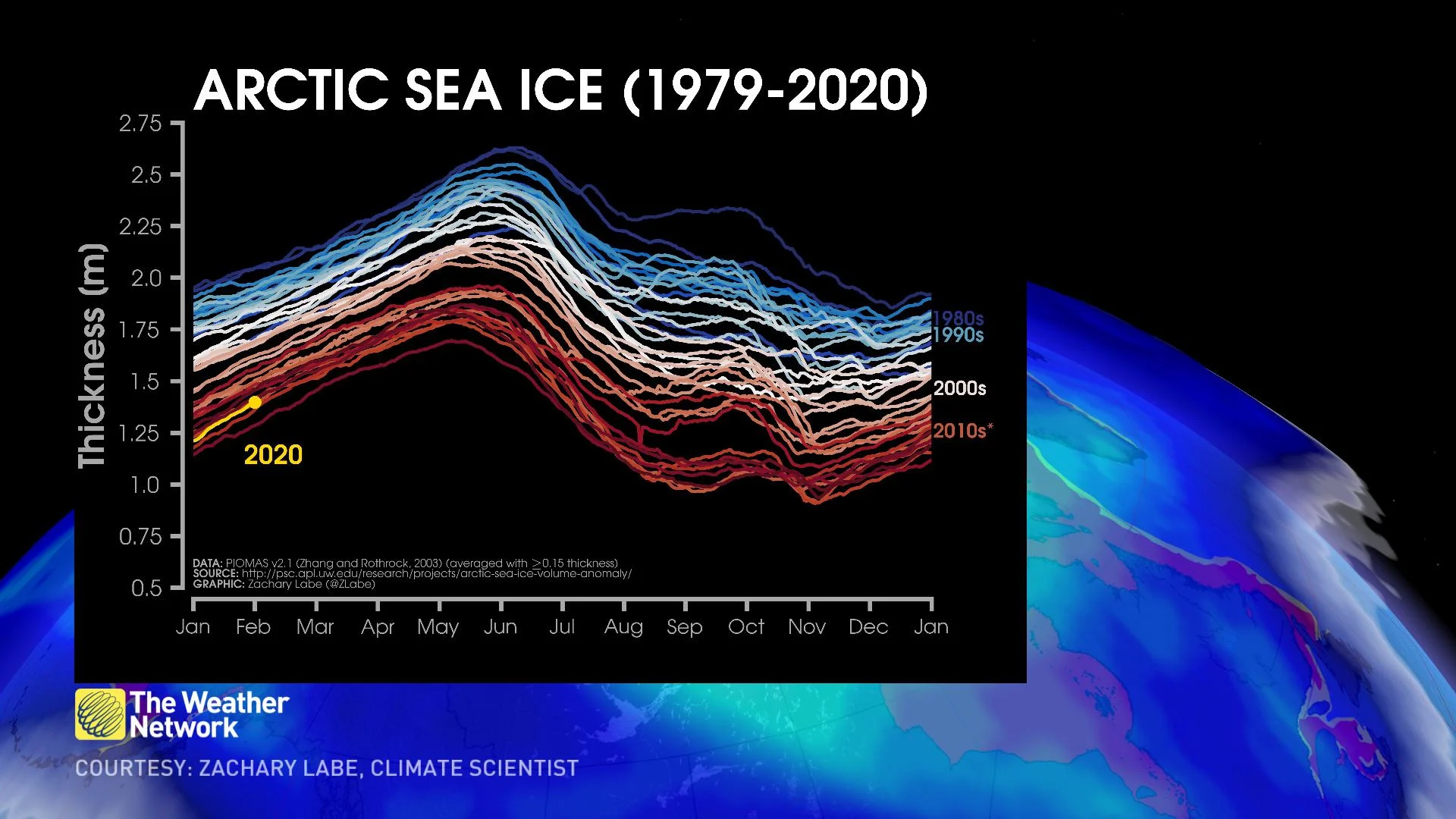
Looking at sea ice as a three-dimensional entity is an accurate approach, and brings together the extent and ice thickness, giving a comprehensive, multi-variable look at the health of Arctic sea ice.
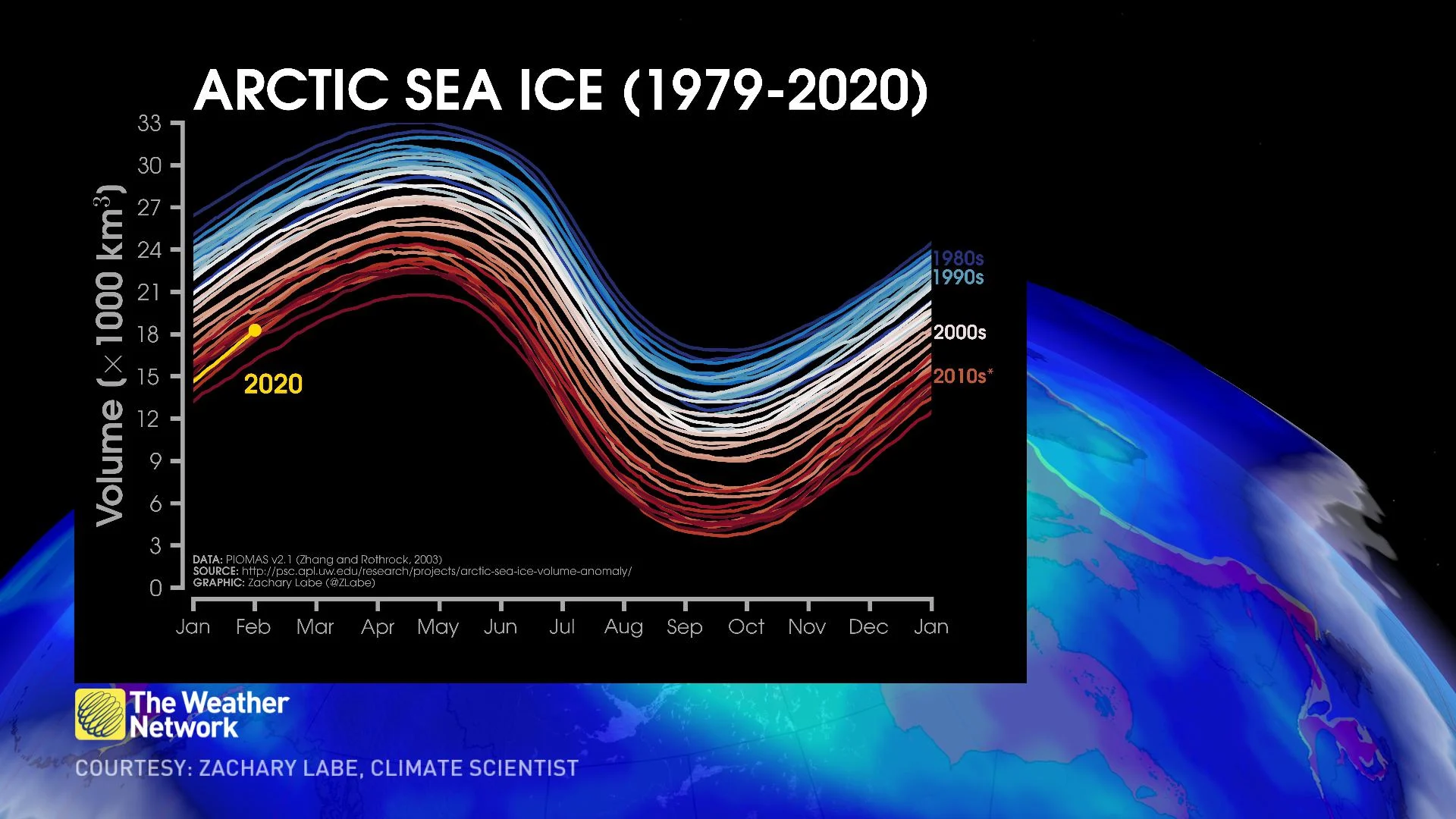
2020 is on the lower end of sea ice volume over the past 40 years, with just a handful of recent years recording less than February 2020.
Over the past couple of decades, the ice that survives year-round tends to be thinner variety and more susceptible to disappearing. The downward trend of sea ice extent, the disappearance of older ice, and shrinking sea ice thickness all point to a rapidly changing climate, with the Arctic taking on a disproportional amount of warming.










